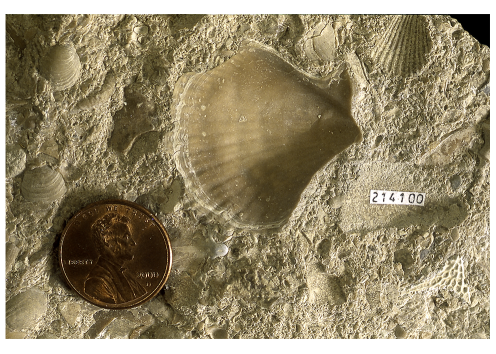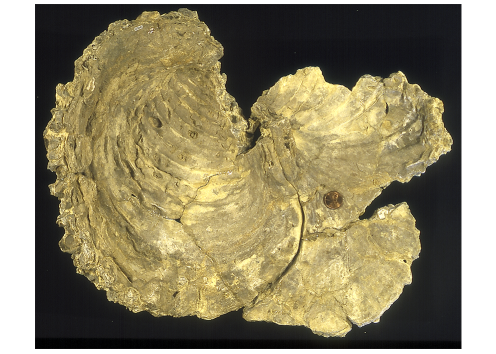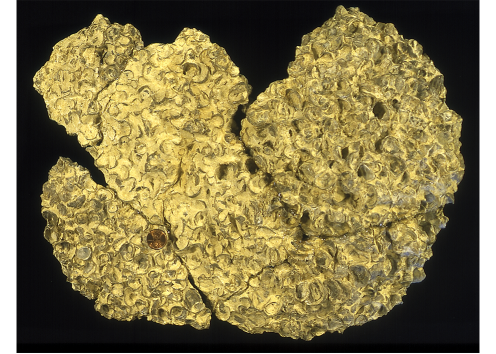Clams and Their Relatives Gallery
Fossil bivalves come in many different shapes and sizes. The largest, the extinct inoceramid clams, were as much as 6 feet in diameter and lived in colonies on the floor of a shallow ocean that covered the interior of North America during the Cretaceous Period. They are preserved in great numbers in the rocks of the Niobrara Chalk in western Kansas.

Pennsylvanian Bivalves
Pennsylvanian bivalves in limestone, collected near Bonner Springs.

Volviceramus — Interior View of Valve
This fossil of Inoceramus (Volviceramus) grandis shows the larger size of some of the inoceramid clams from the Cretaceous (note penny for scale). Interior view of valve. Specimen from the Smoky Hill Chalk Member, Niobrara Chalk, Trego County.

Volviceramus — Exterior View of Valve
Exterior of fossil of Inoceramus (Volviceramus) grandis valve covered with fossils of encrusting oysters. Specimen from the Smoky Hill Chalk Member, Niobrara Chalk, Trego County.